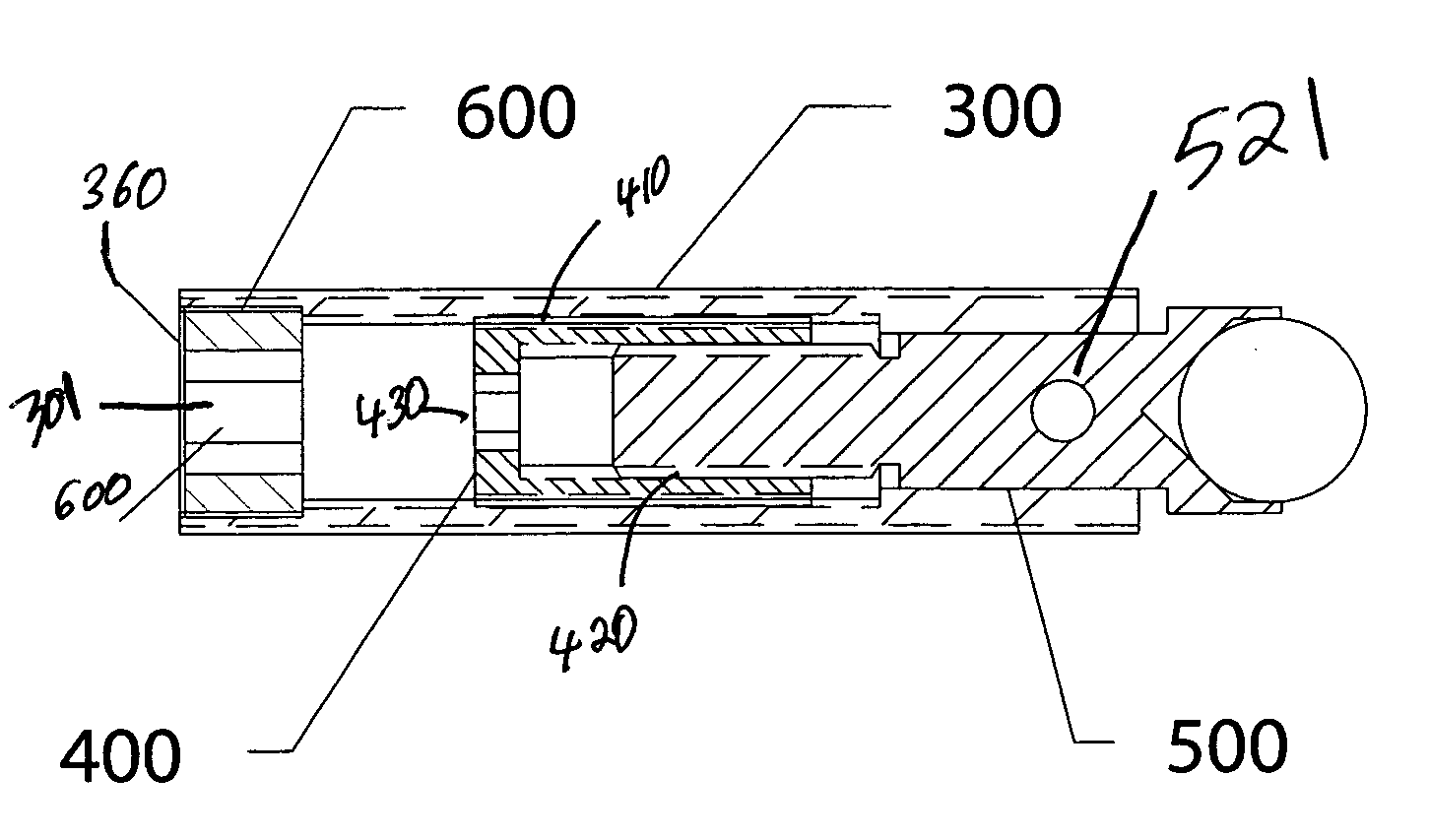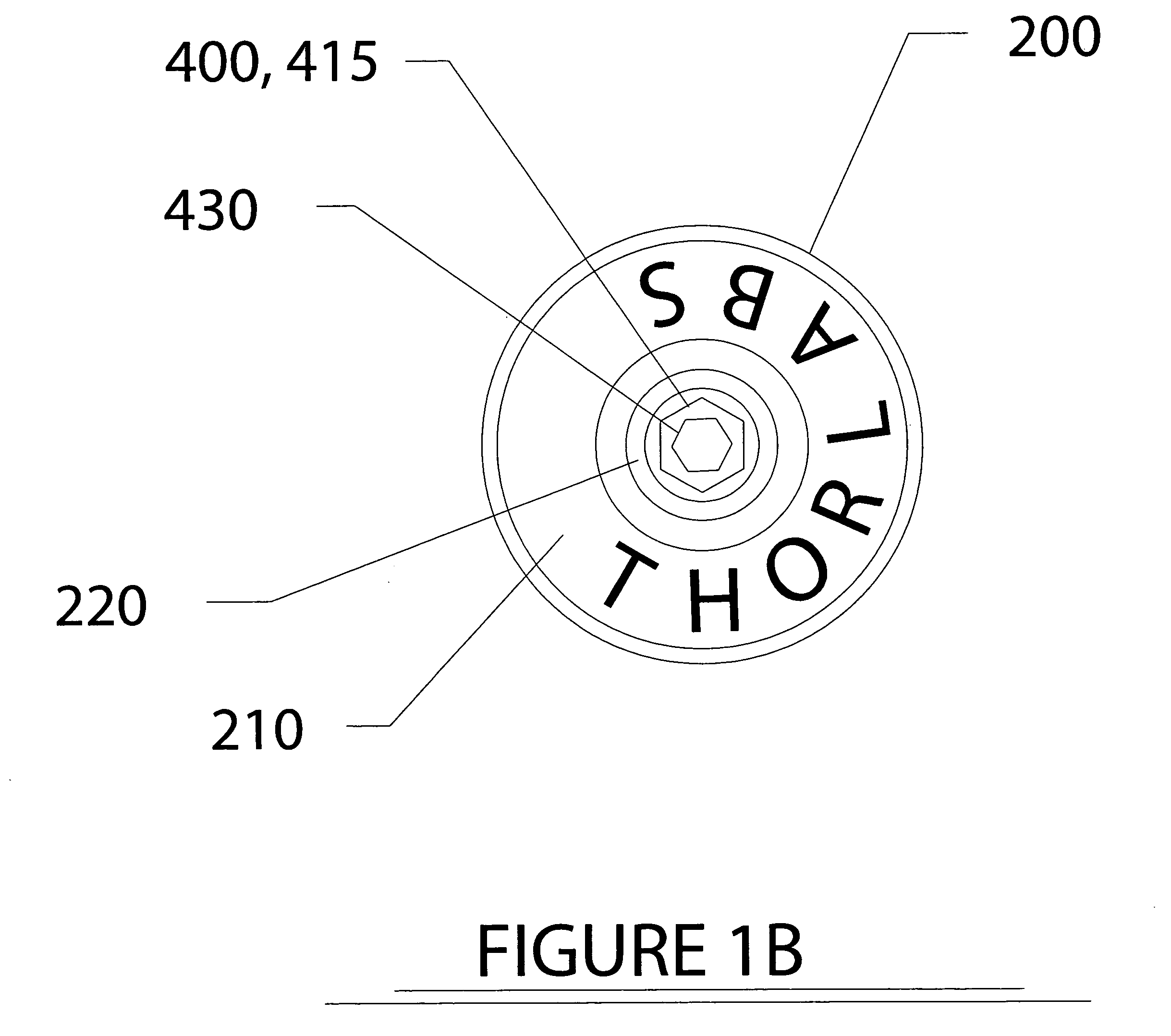Differential adjustment apparatus
a technology of differential adjusters and adjustment apparatuses, which is applied in the direction of mechanical control devices, gearing, instruments, etc., can solve the problems of large and bulky differential adjuster designs in the market, inability to use miniature mechanical devices such as mirror mounts or fiber optic alignment systems, and inability to achieve proper optical adjustment of optical components. , to achieve the effect of reducing the amount of force and increasing the overall size and/or weight of the assembly
- Summary
- Abstract
- Description
- Claims
- Application Information
AI Technical Summary
Benefits of technology
Problems solved by technology
Method used
Image
Examples
Embodiment Construction
[0033]FIG. 1A shows a side cross-sectional view of a differential adjuster 100 (“adjuster 100”) according to some embodiments of the present invention. Adjuster 100 includes an intermediate actuator sleeve 400 with a first threaded surface 410 and a second threaded surface 420. A push rod 500 is coupled to second threaded surface 420 of intermediate actuator sleeve 400 and is in communication with threads on second threaded surface 420. Intermediate actuator sleeve 400 is coupled to a housing 300, which in FIG. 1A is shown as main body 300. In some embodiments, housing 300 can be any housing, including a component mount or other device.
[0034] Push rod 500 is coupled to main body 300 in order to be rotationally constrained with respect to main body 300. In the embodiment shown in FIG. 1A, push rod 500 includes a dowel pin 521 that serves to restrict its rotation with respect to main body 300. In general, any coupling between push rod 500 and main body 300 (or a housing) that constra...
PUM
 Login to View More
Login to View More Abstract
Description
Claims
Application Information
 Login to View More
Login to View More - R&D
- Intellectual Property
- Life Sciences
- Materials
- Tech Scout
- Unparalleled Data Quality
- Higher Quality Content
- 60% Fewer Hallucinations
Browse by: Latest US Patents, China's latest patents, Technical Efficacy Thesaurus, Application Domain, Technology Topic, Popular Technical Reports.
© 2025 PatSnap. All rights reserved.Legal|Privacy policy|Modern Slavery Act Transparency Statement|Sitemap|About US| Contact US: help@patsnap.com



